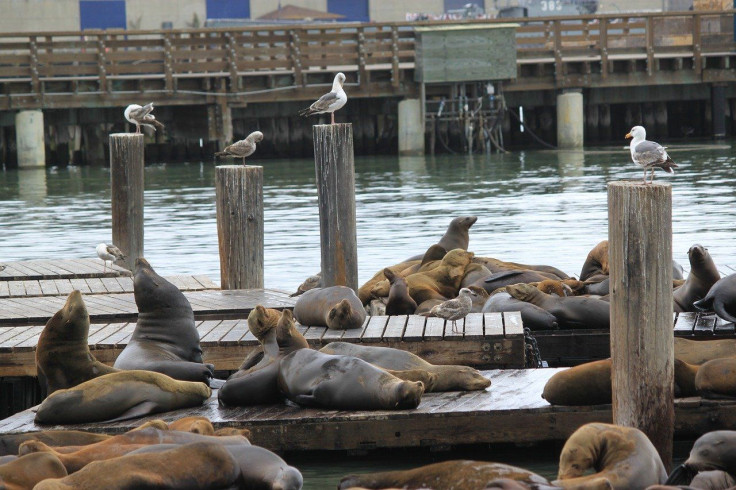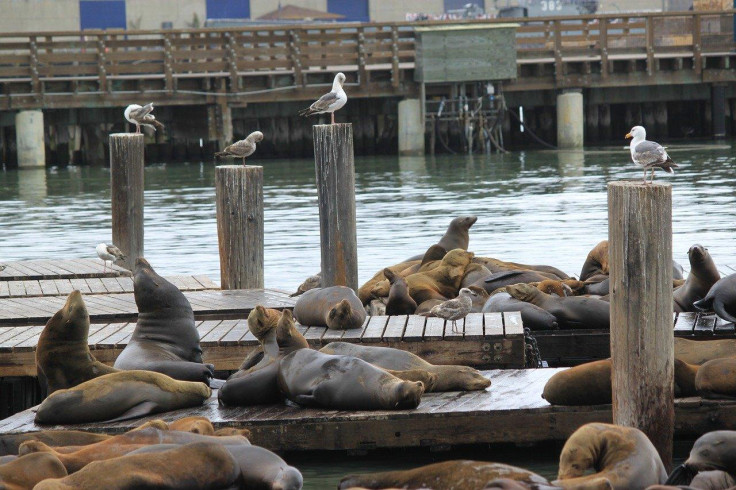California Sea Lions Seeing 'Unprecedented' Cancer Rates; Banned Chemicals Share The Blame

Sea lions have been seeing "unprecedented" rates of cancer, and now-banned chemicals are among the culprits behind the illnesses.
Experts at the Marine Mammal Institute recently had to euthanize a female sea lion that came ashore in San Luis Obispo County, California. It was underweight and was eventually diagnosed with a type of cancer known as urogenital carcinoma, Reuters reported.
The sea lion is only one among the many cases of the illness. However, experts have been seeing frequent diagnoses of the "untreatable" disease that has been affecting the species. In fact, a study published in Frontiers in Marine Science in December found that nearly 25% of adult California sea lions end up developing urogenital carcinoma. This prevalence is "one of the highest among mammals," the researchers said.
"This is an unprecedented rate of cancer in wildlife," Dr. Cara Field, medical director at the Marine Mammal Center, said as per Reuters.
There are two particular factors that are contributing to this grim statistic. One is the cancer-causing Otarine herpes virus (OtHV-1), which researchers said was present in many of the animals that had cancer. The other is the presence of persistent, long-banned pesticides that were found in the deceased sea lions' blubber, including dichloro-diphenyl-trichloroethane ( DDT) and polychlorinated biphenyls (PCBs).
"Very few animals that had cancer did not have the virus," Reuters quoted Dr. Padraig Duignan, study co-author and director of pathology at the center, as saying. "But then when you looked at the levels of chemicals in their blubber and you factor that in, the presence of the chemicals and the level of them increased the probability of cancer anywhere between 30% and 80% higher."
DDT, for instance, was widely used in civilian and military populations before it was banned. However, evidence soon emerged about its potential harms to the environment, wildlife and humans. Some animals exposed to it in studies developed liver tumors, and it's considered to be a carcinogen in humans.
Both DDT and PCBs were banned in the 1970s after they were linked to cancer among other health issues. Despite having been banned for decades, however, they still persist and have made their way to the food chain, Reuters said.
In 2020, a Los Angeles Times investigation found that "thousands of barrels of acid sludge" laced with DDT were dumped close to Santa Catalina Island after World War Two. Just this April, the outlet reported that the chemical "dumpsite" was actually much bigger than thought.
"It was like trying to count stars in the Milky Way," the outlet said.
This has clearly wreaked havoc on sea lions' health, especially since their breeding grounds are close to California's Channel Islands, which includes Santa Catalina.
"(T)he strong association with the herpes virus and pollutants in the environment is a huge warning to us to pay attention to what's happening in the oceans," Field said. "Knowing that there's this presence... that makes you want to take action to improve our environment, not just for the sea lions but for ourselves as well."
This week, the Marine Mammal Center will host a webinar on the "toxic legacy" of DDT dumping and how it is affecting marine mammals.

Photo: Marta Ayerbe/Pixabay





















